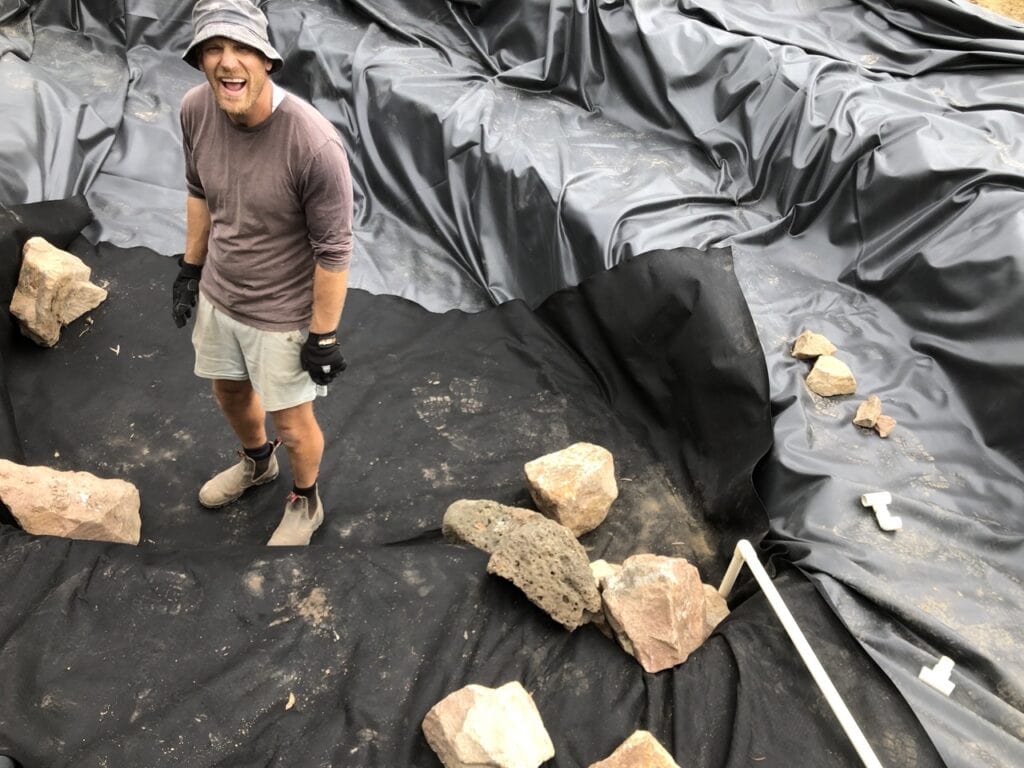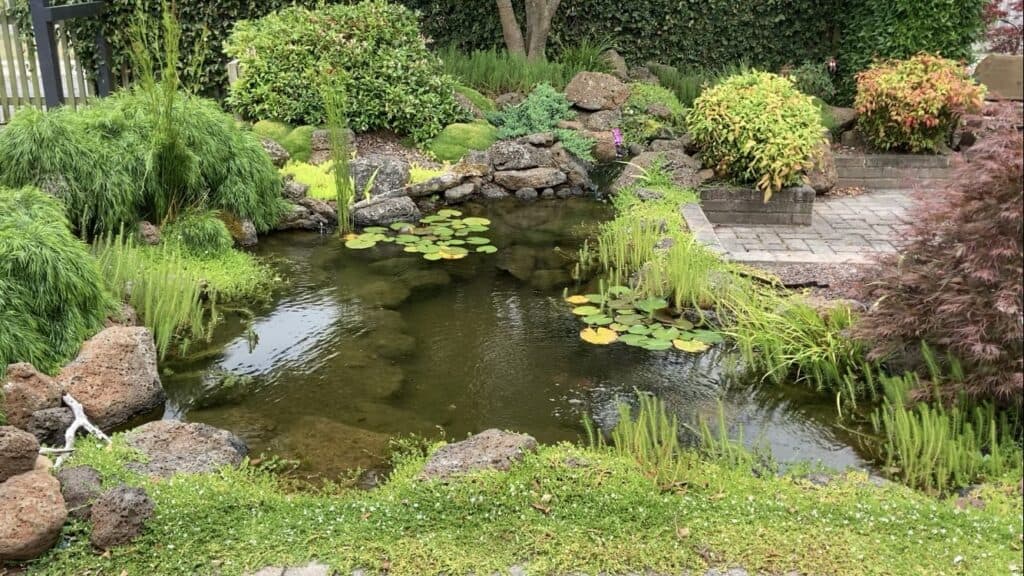I spend a lot of time talking about pond filtration because it’s the most important part of pond keeping. If you get filtration right, maintaining a pond is incredibly easy and rewarding.
Plus, it doesn’t have to be expensive! The bacteria and organisms that filter water have been doing it for millions of years, long before humans came along. All we need to do is provide them with the right habitat, and they’ll reward us with clean, clear, and healthy water.
If you’re new here, my name is Kev, and my goal is to help you build and maintain a pond or water garden without breaking the bank.
Today, let’s dive into seven ways to supercharge your pond’s filtration to keep your water crystal clear and your fish happy.
1. Maximise Surface Area
Nitrifying bacteria, which are crucial for clean water, grow on wet surfaces. The more surface area you provide, the more bacteria can thrive. Whether you buy or build your pond filter, the goal is to move water through surfaces that bacteria can colonise.
- More surface area = more bacteria
- More fish or larger fish require more bacteria
Bog filters are my go-to choice, as they provide plenty of surface area to support beneficial bacteria. Without enough bacteria, your water can turn green due to single-cell algae growth. While green water isn’t harmful to fish, it does make them harder to see.
Hers’s a video I made on how the bacteria works and helps keep the pond water crystal clear:
2. Increase Oxygen Levels
Everything in your pond—bacteria, fish, snails, and shrimp—consumes oxygen from the water. To boost filtration efficiency, you need to ensure your pond is well-oxygenated.
Ways to add oxygen:
- Surface agitation (wind, ripples)
- Waterfalls and fountains
- Aquatic plants
- Aerators and air pumps
As your pond’s inhabitants break down waste, they consume oxygen, making aeration a crucial aspect of filtration. Here’s a video I made on why aeration in a fish pond is so important:
3. Reduce Organic Waste
Waste buildup in your pond is inevitable, but managing it effectively is key. My favorite solution is a bog filter and intake bay combination, which:
- Traps heavy sediments
- Pulls in floating debris like leaves and pollen
Other options include:
- Drum filters
- Swirl filters
- Solids-handling pumps
- Bottom drains
Regular maintenance, such as netting out debris or vacuuming the pond floor, will also help keep waste under control.
Here’s a video showing how little maintenance is required on a pond with a bog filter and intake bay combo:
4. Add Aquatic Plants
Plants do much more than provide oxygen—they actively consume nitrogen and phosphates, which helps to control algae growth. Additionally, plant roots can trap sediments and provide hiding spots for beneficial microorganisms.
If you have fish that like to eat plants, a bog filter offers a protected space where plants can thrive without being disturbed.
Here’s a video where I ramble on about some of my favourite plants and how different plants perform different functions:
5. Utilize the Pond as a Filter
A well-designed pond filled with plants and a deep substrate can act as a natural filter. In some cases, additional filtration may not even be necessary.
If your pond has a balanced ecosystem with plants, rocks, and beneficial bacteria, it can:
- Trap sediments naturally
- Provide food for fish
- Maintain water clarity with minimal intervention
Here’s a video on how to create a pond with no pump or dedicated filter the pond itself is the filter:
6. Encourage Beneficial Microorganisms
Letting nature take its course is often the best approach. Over-cleaning, using chemicals, and obsessing over water parameters can do more harm than good.
To support beneficial bacteria:
- Avoid overcleaning your pond and filters
- Refrain from using unnecessary chemicals
- Trust in nature’s ability to balance itself
Here’s a video where I go into more details on why its not wise to over clean your pond:
7. Consider Chemical Filtration (If Needed)
If you’re aiming for an ultra-clear, heavily stocked pond, you might need additional filtration methods such as:
- Activated carbon: Removes toxins and discolouration
- UV sterilisers: Kills green water algae and harmful bacteria
- Ozone generators: Enhance water clarity and quality
- Hydrogen peroxide: Helps with stubborn algae
While these methods can be useful, I prefer to keep things natural whenever possible.
Below are some videos where I show the use of these products or talk about them in more length:
Final Thoughts
Filtering pond water is easy and doesn’t have to be expensive or complicated. The key is to find a system that works for you and your pond’s specific needs.
If you’d like to learn more about how I build my ponds, check out my handy filtration cheat sheet.

Blueprint I use to build my ponds
- All the numbers I use to design my ponds, delivered straight to your inbox
- These formulas have helped people all over the world build beautiful, low maintenance ponds, without spending a fortune.
- Access to a private community of like minded people and a chat bot that loves answering pond related questions.
Owning a pond should be enjoyable, not a chore. Find a filtration system that resonates with you, and let nature do the rest!
If you found this guide helpful, be sure to explore my videos and resources to continue your pond journey.

Join my free email list
If you would like to join my free email list click the button below.
I promise I won’t spam you, I’ll only send information I think can help you save money building and maintaining a pond.

